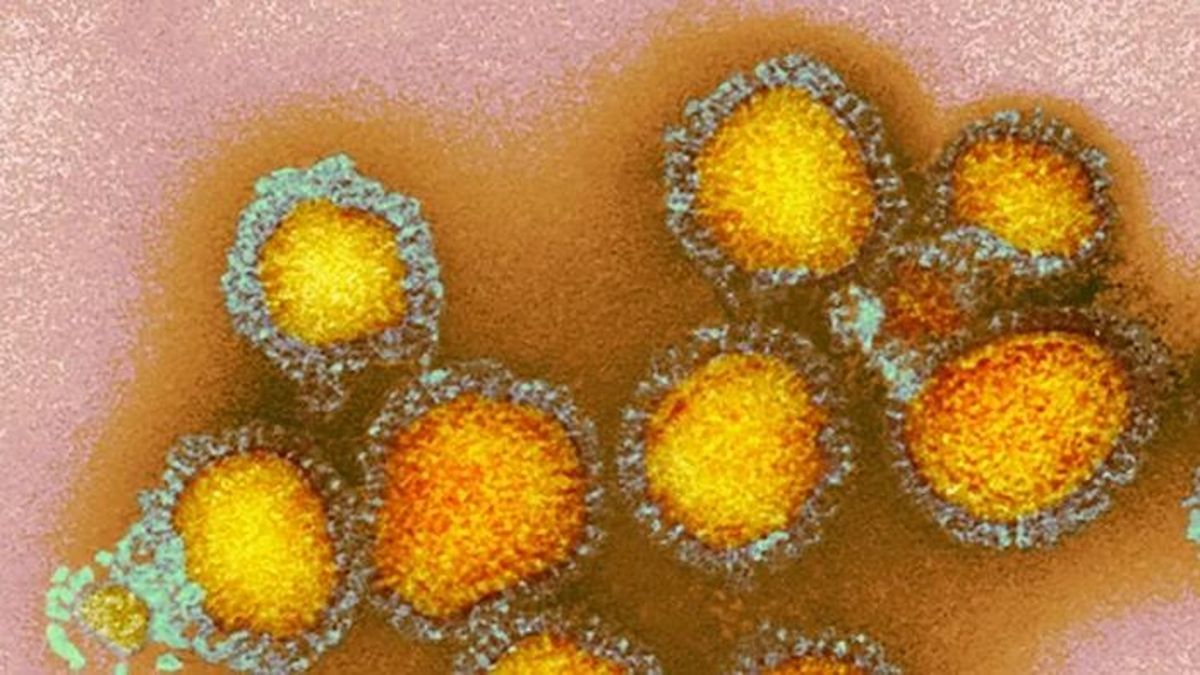Most flu viruses enter human cells through a single entryway — but new research has revealed a “back door” some germs can use to more easily infect cells and jump between species.
Like human flu viruses, many flu viruses that infect animals use sialic acids to enter host cells. However, some use a different entryway, called the major histocompatibility complex class II (MHC-II). Scientists had speculated
In a study published July 15 in the journal Nature Microbiology, researchers examined several subtypes of flu viruses to see whether any of them showed an ability to use both routes. They used two types of human cells: one with no detectable surface MHC-II expression and one with high levels of expression. “Expression” refers to the process by which cells make proteins.
Related: H5N1: What to know about the bird flu cases in cows, goats and people
The scientists exposed the cells to virus-like particles designed to resemble three different subtypes of flu viruses that have previously caused flu epidemics in humans: H1N1, H3N1 and H2N2.
The researchers saw that 10 times as many H2N2 lookalikes were able to enter cells with MHC-II than could enter MHC-II-deficient cells. That’s despite both these cell types’ having the same levels of sialic acids on their surfaces.
Next, the researchers wanted to double check that MHC-II complexes were actually an entry route for the viruses. They used gene editing to remove the cells’ ability to make sialic acids, thus eliminating the route most flu viruses take. The H1N1 and H3N1 lookalikes were unable to infect the cells that lacked sialic acids. But the H2N2 particles could bind and enter those cells almost as efficiently as they could infect cells with normal sialic acid expression.
Finally, the researchers looked at different H2N2 strains to see which could use this alternate route. They identified three amino acids
Interestingly, they also found that these viruses could replicate faster and reach higher levels in human lung cells than viruses that only use the “front door.” In theory, this could make those viruses more likely to cause disease in and spread between humans.
A major concern is that not just human flu viruses enter our cells this way — it’s that animal flu viruses can use the same route. Avian H2N2, for example, is a bird flu virus that caused a pandemic in the 1950s a human H1N1 virus
“Today, H2N2 viruses no longer circulate in humans, but reside in the avian reservoir,” study author Umut Karakus
H2 viruses can infect pigs, mice and ferrets variety of birds transmit “zoonotically” from animals to humans. If such viruses pick up the ability to spread easily between people, they can spark pandemics .
So, how great is the threat of zoonotic infection from viruses that can use this “back door” into our cells?
“We need to understand how relevant that entry route is in jumping between species,” said Richard Webby Collaborating Center for Studies on the Ecology of Influenza in Animals and Birds
“Do viruses actually use that route? What is the relative contribution of MHC-II versus sialic acid?” said Webby, who was not involved in the study. “These questions are a good way to assess the risk that ‘super viruses’ circulating in animals might eventually jump over to humans.”
With a better understanding of how these viruses behave in the wild, scientists can make more accurate judgements about where the greatest risks lie, and how we can best prevent the next flu pandemic.
Ever wonder why some people build muscle more easily than others or why freckles come out in the sun ? Send us your questions about how the human body works to community@livescience.com with the subject line “Health Desk Q,” and you may see your question answered on the website!




















Discussion about this post